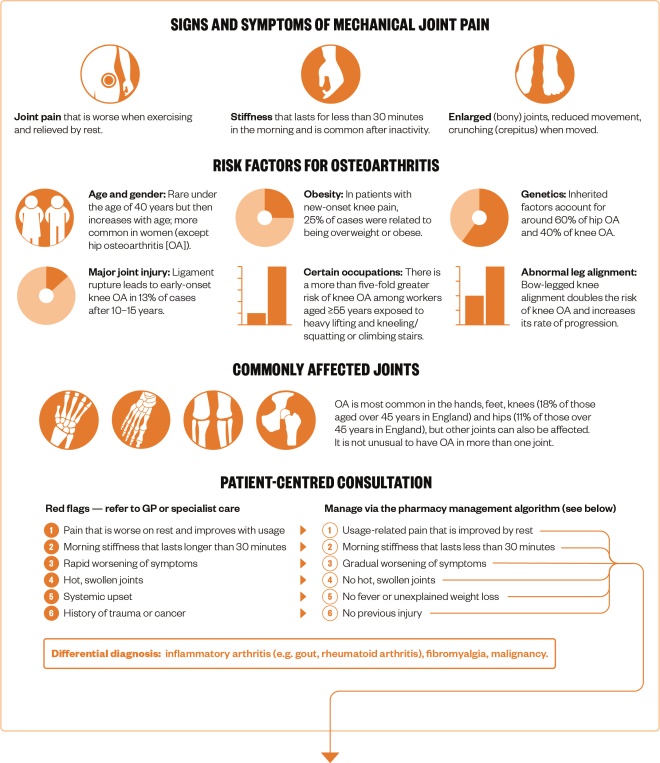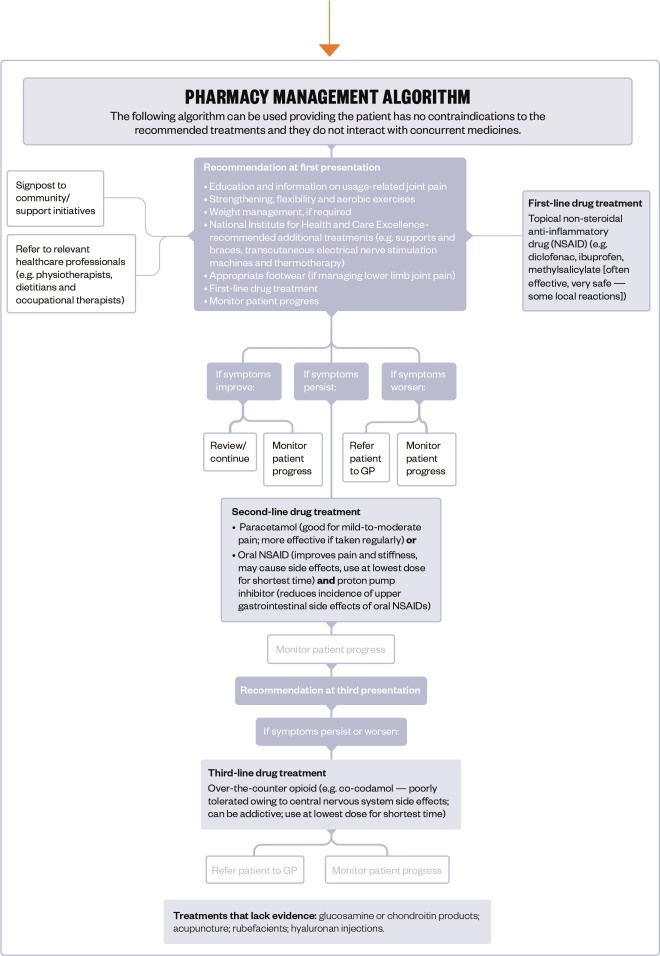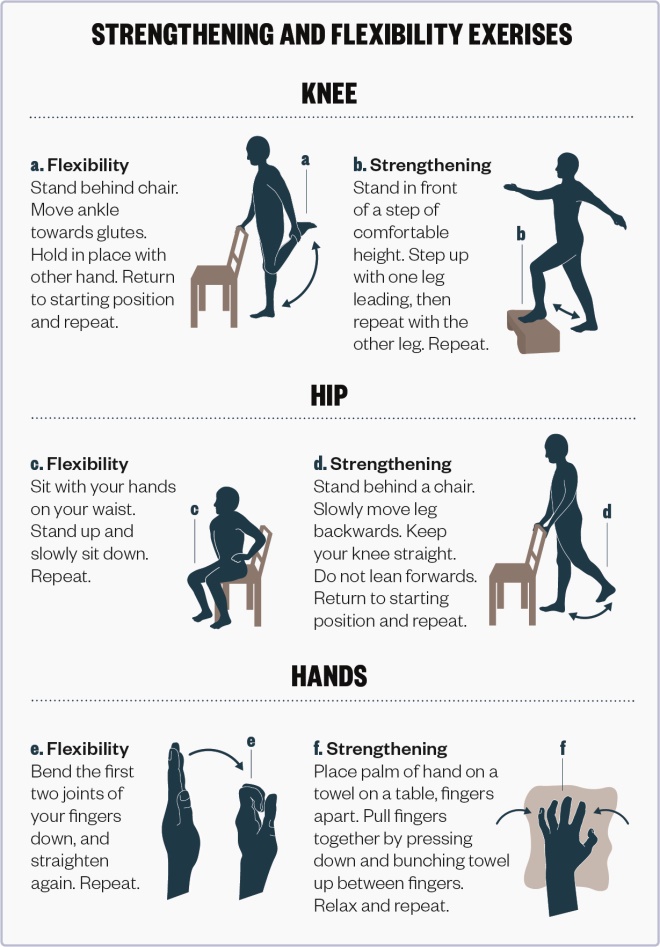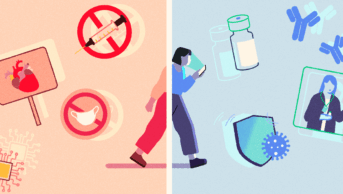You can view the full infographic here

Source: Annals of Physical and Rehabilitation Medicine 2016;59(3):134–138, Work 2015;50(2):261–273, Versus Arthitis (Arthritis Research UK), Arthritis Care, National Institute for Health and Care Excellence, National Institute on Aging
Joint pain can be classified as either mechanical (activity-related) or inflammatory. Osteoarthritis — the most common cause of mechanical joint pain — is the inherent repair process of synovial joints and not a disease, as commonly thought. Sometimes this process fails and patients present with symptoms of pain and functional impairment. Joint pain classification is based on signs and symptoms; X-rays are not needed.

Source: Versus Arthritis (Arthritis Research UK), National Institute for Health and Care Excellence

Source: Source: Christopher Hayes, Versus Arthritis (Arthritis Research UK)
Flexibility exercises help to stop the joint capsule from tightening and strengthening exercises help to strengthen the supporting muscles, so reducing pain and improving function.
References
Editorial advisers: The Pharmaceutical Journal joint pain expert panel.
Infographic: alisdairmacdonald.co.uk



